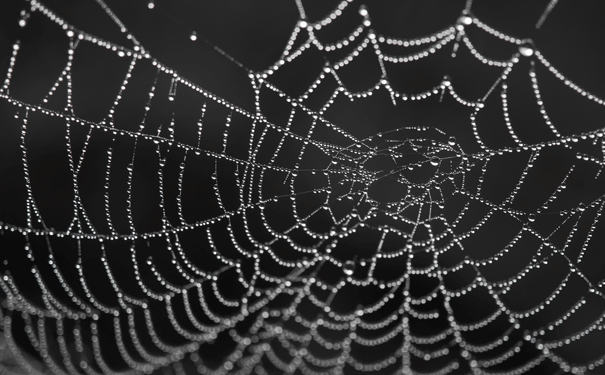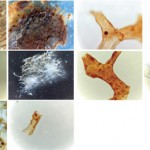
Spider silk is only four microns thick; a human hair, for example, is about 60 microns thick. Image: Shutterstock
This super strong, stretchy fibre is capable of much more than just catching flies.
Nature’s toughest fibre has the potential to make bulletproof vests, artificial tendons, and can even be engineered to come out of goat milk. Now it has been proven to be able to conduct heat as well as — and even more effectively than — most metals.
Xinwei Wang, an associate professor of mechanical engineering at Iowa State University, US, had been looking for organic materials that can effectively transfer heat. Based on a hunch, Wang bought eight golden silk orbweaver spiders and kept them in the university’s greenhouse. He then left them to start spinning webs in order to test the fibre’s thermal conductivity.
Spider silk is incredibly strong, stretchy and only four microns thick. Although it had been speculated that the silk could be a good conductor of heat, nobody had ever tested its effectiveness.
Wang and his research team found that spider silk could conduct heat better than most materials, including silicon, aluminium and iron. For an organic material, this is the highest ever. There are only a few materials higher — silver and diamond.
“I think we tried the right material,” Wang said of the results. “Our discoveries will revolutionise the conventional thought on the low thermal conductivity of biological materials.”
The results also showed that when spider silk is stretched, thermal conductivity also goes up: usually materials lose thermal conductivity when they’re stretched. Wang stretched spider silk to its 20 per cent limit and observed an increase in conductivity of another 20 per cent.
Although more research needs to be conducted to fully understand spider silk’s heat conducting properties, Wang’s discovery opens a lot of doors for future technologies, including heat-dissipating parts for electronics, better clothes for hot weather, bandages that don’t trap heat and many other everyday applications.
“This opens a door for soft materials to be another option for thermal conductivity tuning,” Wang said. — Alice Orszulok
Source: Science Daily







govind rawat
March 18, 2012
hi….that’s realy a gr8 research or discovery tht spider silk is a superconductor more that silver and diamond. it’ll help us in future in heat dissipating mechanism…..thnx wang……